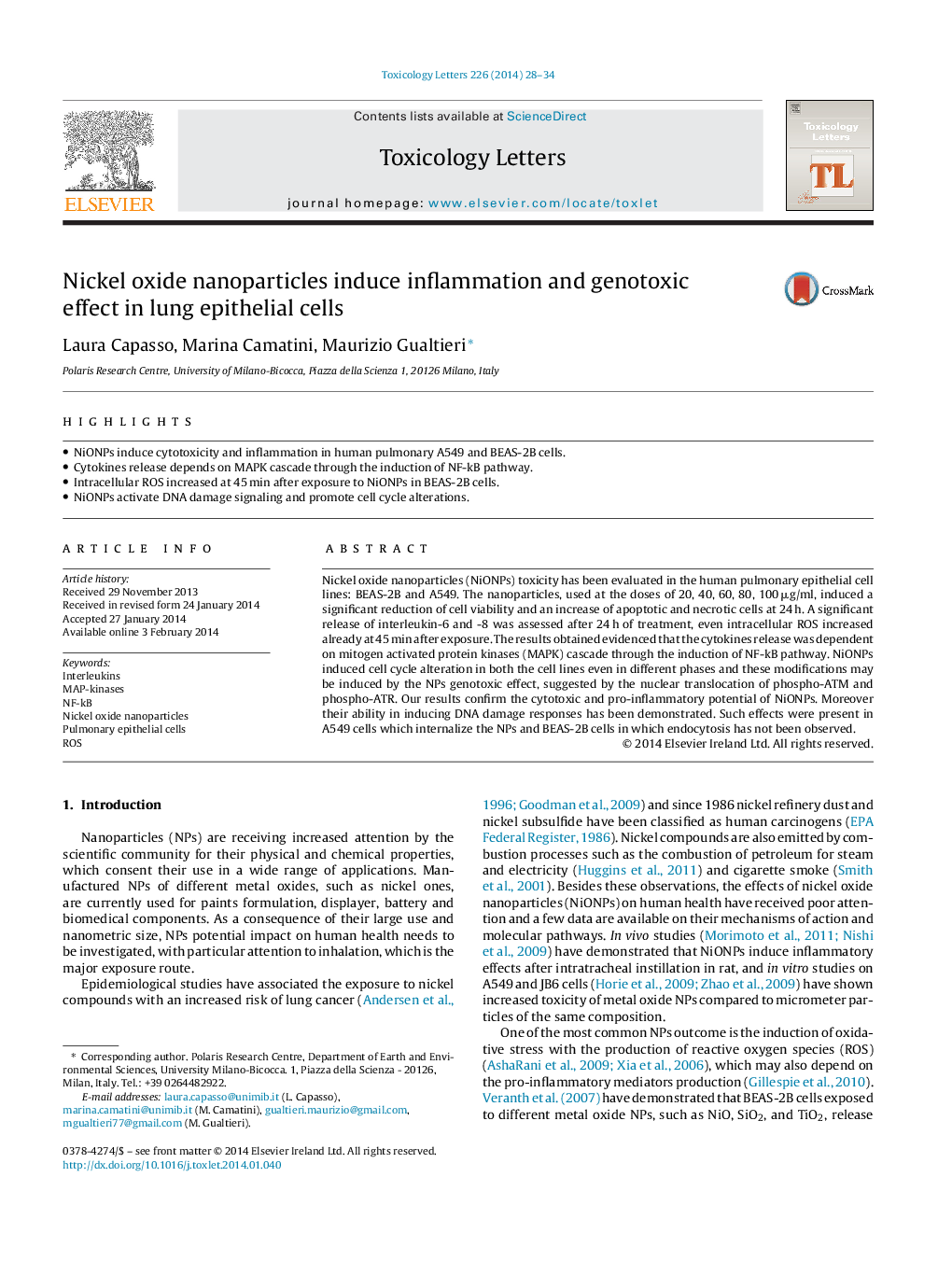| Article ID | Journal | Published Year | Pages | File Type |
|---|---|---|---|---|
| 2599058 | Toxicology Letters | 2014 | 7 Pages |
•NiONPs induce cytotoxicity and inflammation in human pulmonary A549 and BEAS-2B cells.•Cytokines release depends on MAPK cascade through the induction of NF-kB pathway.•Intracellular ROS increased at 45 min after exposure to NiONPs in BEAS-2B cells.•NiONPs activate DNA damage signaling and promote cell cycle alterations.
Nickel oxide nanoparticles (NiONPs) toxicity has been evaluated in the human pulmonary epithelial cell lines: BEAS-2B and A549. The nanoparticles, used at the doses of 20, 40, 60, 80, 100 μg/ml, induced a significant reduction of cell viability and an increase of apoptotic and necrotic cells at 24 h. A significant release of interleukin-6 and -8 was assessed after 24 h of treatment, even intracellular ROS increased already at 45 min after exposure. The results obtained evidenced that the cytokines release was dependent on mitogen activated protein kinases (MAPK) cascade through the induction of NF-kB pathway. NiONPs induced cell cycle alteration in both the cell lines even in different phases and these modifications may be induced by the NPs genotoxic effect, suggested by the nuclear translocation of phospho-ATM and phospho-ATR. Our results confirm the cytotoxic and pro-inflammatory potential of NiONPs. Moreover their ability in inducing DNA damage responses has been demonstrated. Such effects were present in A549 cells which internalize the NPs and BEAS-2B cells in which endocytosis has not been observed.
